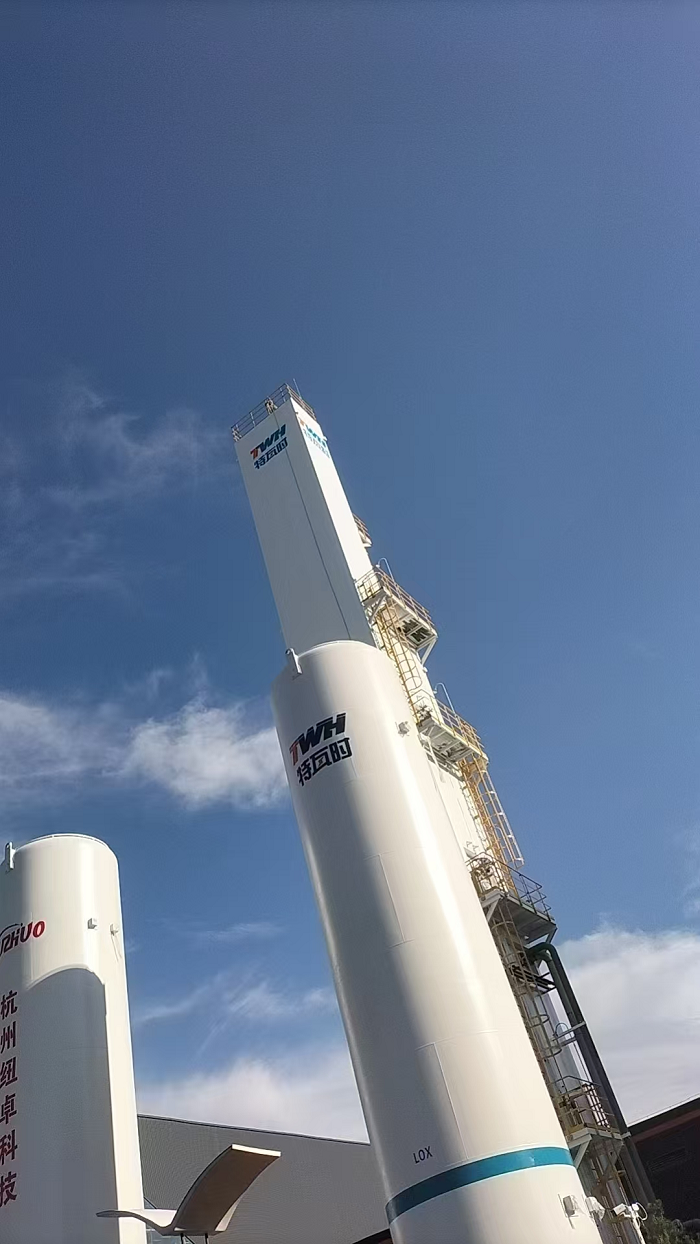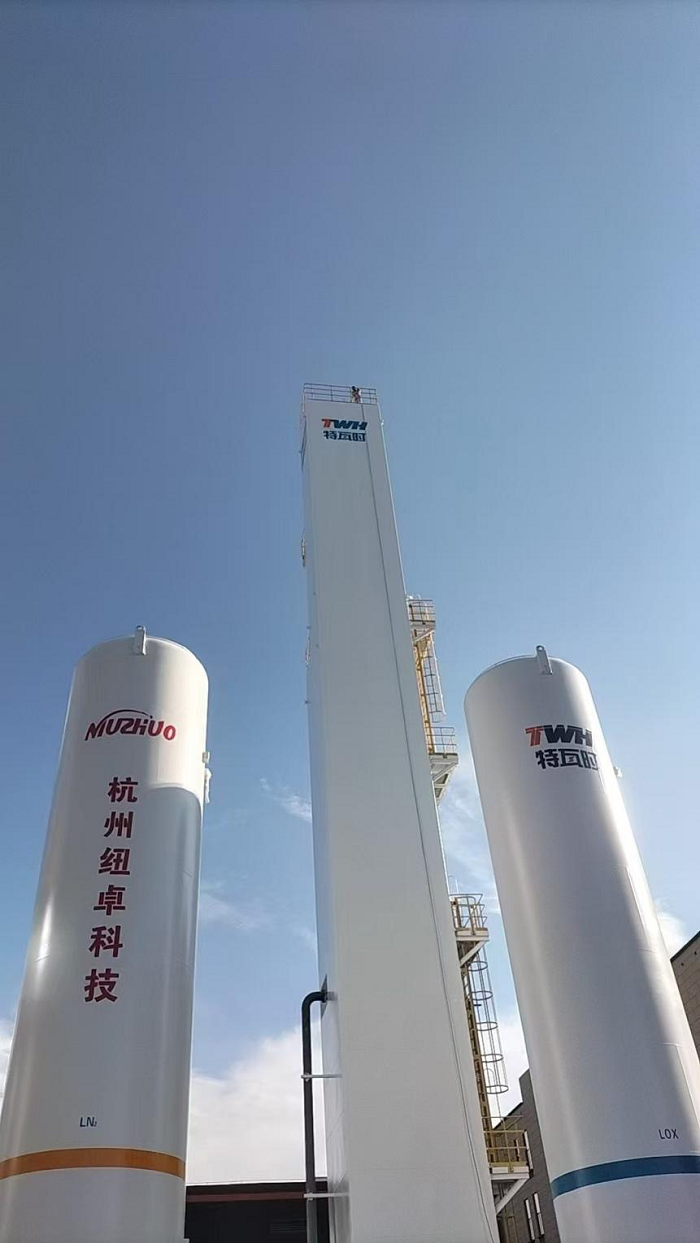Deep cryogenic air separation equipment plays a crucial role in the industrial gas manufacturing sector, being widely used for the production of industrial gases such as nitrogen, oxygen, and argon. However, due to the complex process and demanding operating conditions of deep cryogenic air separation equipment, failures are inevitable. To ensure the long-term stable operation of the equipment, it is essential to respond to failures promptly and effectively. This article will provide you with an in-depth introduction to the common types of deep cryogenic air separation failures and their corresponding solutions, helping you take the correct approach when encountering problems.
Common Fault Types
During the operation of deep cryogenic air separation, common failures include low liquid level in the liquid air, equipment leakage, abnormal separation tower temperature, and compressor failures. Each type of failure may have multiple causes, and these issues require timely diagnosis and resolution. Low liquid level in liquid air is usually caused by equipment leakage or blockage in the liquid pipeline; equipment leakage may be due to damaged seals or corrosion of pipelines; abnormal separation tower temperature is often related to reduced heat exchange efficiency in the cold box or failure of insulation materials. Understanding the causes of these failures helps to take effective countermeasures.
Fault Diagnosis Methods
The fault diagnosis of deep cryogenic air separation equipment usually requires the combination of actual operation data and fault manifestations. First, real-time monitoring of the equipment’s operation status through automated monitoring systems can quickly identify potential problems based on abnormal changes in key parameters such as pressure, temperature, and flow. Additionally, regular equipment maintenance and data analysis are crucial for detecting potential issues within the equipment. For example, analyzing the temperature difference of the heat exchanger can determine if its heat transfer performance is normal; using ultrasonic testing can detect cracks in the pipeline interior.
Response to Compressor Failures
The compressor is one of the core components of deep cryogenic air separation equipment, responsible for providing necessary gas pressure. If the compressor fails, it often leads to the shutdown of the entire system. Common compressor failures include bearing damage, seal leakage, and motor overheating. When these issues occur, it is necessary to first confirm the specific location and cause of the failure, and then take corresponding measures. For example, bearing damage typically requires replacing the new bearing, while motor overheating requires checking the operation of the cooling system to ensure its normal operation. Additionally, the vibration and noise during compressor operation are important indicators of its working condition and should be constantly monitored.
Handling of Heat Exchanger Failures
The heat exchanger plays a core role in heat exchange in deep cryogenic air separation. Once a failure occurs, it may significantly affect the normal separation of gases. Common failure types of heat exchangers include blockage and reduced heat transfer efficiency. When a blockage occurs, it can be solved through flushing or mechanical cleaning; for cases of reduced heat transfer efficiency, it is usually due to scaling or equipment aging, and can be addressed through chemical cleaning or replacement of aging components. Regular inspection and maintenance of heat exchangers are also effective means of preventing failures.
Response Measures for Abnormal Separation Tower Temperatures
The separation tower is a key device for gas separation, and its temperature directly affects the purity of gases such as nitrogen, oxygen, and argon. If the temperature is abnormal, it may result in non-compliance with the purity standards of these gases. Abnormal temperatures can be caused by various factors such as failure of insulation materials or insufficient cooling agent flow. When an abnormal temperature occurs, it is necessary to first check the cold box and insulation layer to ensure normal insulation performance, and then check the refrigeration system to ensure normal cooling agent supply. Additionally, adjusting process parameters to adapt to temporary temperature changes can help maintain the stable operation of the separation tower.
Handling of Pipeline Leakage and Sealing Issues
In deep cryogenic air separation equipment, the sealing of pipelines and joints is of great importance. Once a leak occurs, it not only affects the operational efficiency of the equipment but also may lead to safety accidents. Common causes of leakage include damaged seals and corrosion of the pipelines. When a leakage problem arises, the first step is to identify the leak point through pressure testing or odor detection. Then, based on the specific situation, replace the seals or repair the corroded pipelines. To prevent the occurrence of leaks, it is recommended to conduct regular inspections and maintenance of seals and pipelines, especially for high-pressure sections, and strengthen the monitoring and management of sealing.
Measures for Preventing Failures
The key to preventing failures in deep cryogenic air separation equipment lies in regular maintenance and correct operation. First, operators should have solid knowledge of equipment operation and operate the equipment strictly in accordance with operating procedures. Secondly, establish a complete maintenance and maintenance plan, conduct regular inspections and replacements of key components, especially vulnerable parts and those in harsh operating environments. For the automated monitoring part of the system, regular calibration and testing are also required to ensure that it can accurately reflect the actual operating status of the equipment. In addition, enterprises should attach importance to training operators to improve their ability to identify and handle common equipment failures, so that they can respond quickly when a failure occurs.
We are manufacturer and exporter of air separation unit. If you want to know more about us:
Contact person:Anna
Tel./Whatsapp/Wechat:+86-18758589723
Email :anna.chou@hznuzhuo.com
Post time: Aug-18-2025
 Phone:
+86-18069835230
Phone:
+86-18069835230 E-mail:lyan.ji@hznuzhuo.com
E-mail:lyan.ji@hznuzhuo.com








